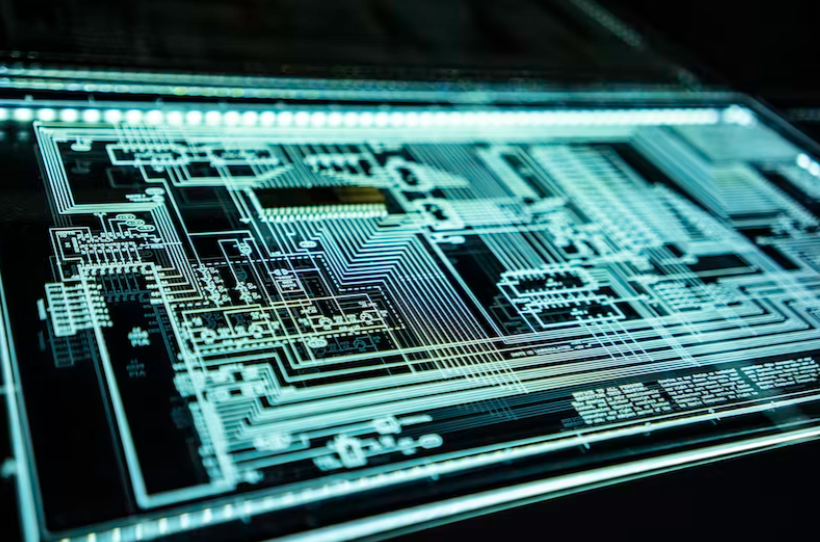Does your business need end-point or managed detection response?

As businesses continue to face a growing number of cyber threats, the need for advanced security measures becomes more important. In this article, we look at SecurityHQ, a managed detection and response (MDR) and endpoint security service that is helping businesses protect their data from threats and hackers. By combining network monitoring, centralized visibility, and automated threat response, SecurityHQ is equipping businesses with the tools they need to defend their data and prevent costly data breaches.
SecurityHQ’s services are accessible via an easy-to-use web-based dashboard, making it simple for users at all levels of the organization to use the solution and see the benefits. In addition to its MDR and endpoint security features, SecurityHQ offers other data protection services, including encryption, data loss prevention, and continuous monitoring. With all these tools in one place, SecurityHQ makes it easy for businesses to protect their data and prevent cyber attacks.
We will discuss both solutions in detail and explain why one may be better suited for your business than the other and how to figure out which solution is best for your business.
What is endpoint security?
Endpoint security refers to the security measures that are put in place to protect the data on a system or device, such as a computer or mobile phone. This type of security focuses on preventing malicious activities, such as viruses and malware, that may occur on endpoints. This can be done through a variety of methods, such as installing antivirus software, updating software and operating systems with the latest patches, and using strong passwords for accounts.
Because endpoint devices can pose a threat to networks, endpoint security also includes securing those devices from outside threats. This may include installing firewalls and applying patches and updates as soon as they become available. When it comes to protecting businesses, endpoint security is a crucial part of the equation.
This type of security can be implemented across a company’s entire network, including employee devices and BYOD (Bring Your Own Device) policies. By protecting endpoints, businesses can protect sensitive data and networks from outside threats.
SecurityHQ recently highlighted in their datasheet how businesses can manage their endpoint security more effectively. They recommend advanced threat hunting together with machine learning to ingest millions of EDR sensor data and identify new behaviour and 24/7 SOC analytics to take proactive actions, blocking, isolating and investigating the threats.
Benefits of endpoint security
Improved security: protecting sensitive data
One of the biggest advantages of endpoint security is that it protects your sensitive data by preventing malicious activities on endpoints. This can be done through a variety of methods, including installing antivirus software, updating software and operating systems with the latest patches, and using strong passwords for accounts.
Improved visibility and response time: protecting data from insider threats
Endpoint security also protects sensitive data from insider threats. This includes monitoring endpoints for suspicious activities, such as attempts to log in to accounts without proper credentials. EDR solutions provide administrators with greater visibility into the endpoints on a given network.
This visibility can alert administrators to the presence of malicious files or processes. As a result, by providing greater visibility, EDR can dramatically improve the speed at which an organization can detect and respond to threats. Thus, improving an organization’s overall security posture.
Reduced risk: helping to prevent network breaches
By detecting threats faster and more effectively, as well as done correctly, EDR solutions can also help prevent network breaches and reduce the risk of successful attacks. This can be done through the use of firewalls, which are designed to block incoming threats from entering the network.
What is managed detection and response?
Due to the increase and evolution of cybercrime, the issues with solutions, including people, processes & technology, are prominent. SecurityHQ provides round-the-clock monitoring to detect, investigate, notify & respond to incidents & potential threats.
In their datasheet, SecruityHQ shares how they rapidly identify & limit the impact of security threats with security orchestration automation & response tooling.
Managed detection and response (MDR) features a service that provides advanced threat detection, incident response, and remediation services. MDR can be used to detect and respond to advanced threats, including ransomware, zero-day attacks, and cyber-attacks. MDR services typically include a team of cyber security experts that monitor your network for malicious activities.
If a threat is detected, the team will respond by containing the issue and containing the issue as quickly as possible. This may include removing malware, remediating the source of the attack, and restoring the network. These services also include real-time threat intelligence, which can help businesses proactively protect their networks and data from future attacks. Endpoint security is vital as there has been a substantial growth of highly sophisticated Advanced Persistent Threats (APT’s). Therefore, MDR is more important than ever.
Benefits of managed detection and response
Enhanced security monitoring
One of the biggest advantages of MDR is that it provides a more holistic approach to security. Rather than focusing solely on endpoint devices, MDR services also focus on the network.
Faster response time and improved visibility and control
MDR services can also help detect and respond to advanced threats, including ransomware, zero-day attacks, and cyber-attacks. With the right MDR solution, businesses can detect and respond to threats quickly, which can help reduce the impact of the attacks.
Real-time threat intelligence
In addition to detecting and responding to threats, MDR services also include real-time threat intelligence, which can help businesses proactively protect their networks and data from future attacks. This can be done through reports that provide details on the type of threat and how it was detected.
What is Managed Microsoft Sentinel?
Managed Microsoft Sentinel is a managed detection and response solution that provides protection against various threats targeting the network including ransomware, viruses and more. Together with SecurityHQ skills, analytics, and security orchestration, it delivers the highest degree of threat detection and incident response.
Download SecuityHQ’s datasheet to learn how you can empower your Managed Microsoft Sentinel with SecurityHQ’s 24/7 Security Operation Centre (SOC).
Managed Microsoft Sentinel uses machine learning and behavior analytics to identify threats in real-time, including those that are new or unknown. It also uses a process known as sandboxing to analyze suspicious files and determine if they are safe or malicious. In the event that a threat is detected, the solution can take action to prevent it from causing damage. The solution is powered by Microsoft Advanced Threat Analytics (ATA) and has the ability to scale across organizations of all sizes.
Managed Microsoft Sentinel also includes threat intelligence from Microsoft’s global network of data centers, which allows organizations to make better and more informed decisions when it comes to dealing with alerts. In addition to providing endpoint protection, Managed Microsoft Sentinel also offers visibility into the state of devices, allowing businesses to track the health of their devices and take action if a device needs to be replaced or repaired.
The diagram below shows how MDR works when powered by Microsoft Sentinel.
Benefits of Managed Microsoft Sentinel
The benefits to MDR include:
- Comprehensive security analytics and insights.
- Automated threat detection.
- Advanced hunting capabilities.
- Automated threat response.
- Secure collaboration and sharing.
- Threat intelligence sharing.
- Cross-platform support.
How to choose the right solution for your business
When choosing an endpoint and MDR solution for your business, you should consider several factors, including your current security and goals for the future.
You should also consider the following questions.
How does your current security stack up?
Before you begin looking for new security solutions, you should assess your current security. This can include evaluating the effectiveness of your current endpoint security and conducting a risk assessment to determine where your business is most vulnerable to cyber threats.
How is your business currently handling security incidents?
Another factor to consider is how your business currently handles security incidents. If you are currently handling these incidents on your own, you should evaluate the benefits of outsourcing this work to an MDR solution.
If you are using a hybrid solution that combines endpoint and MDR services, you should evaluate the effectiveness of each solution and decide which one should remain in-house and which one should be outsourced. Download SecurityHQ’s datasheet to find out how you can maximize security effectiveness with MDR.
Implementing endpoint and MDR solutions
After you have selected the right endpoint and MDR solutions for your business, you will need to implement them. This can include purchasing the services and installing the right software or hardware.
You should also follow these best practices to ensure that your new solutions are effective and remain secure:
Educate employees
One of the first things you should do after implementing new endpoint and MDR solutions is to educate your employees on the importance of these solutions. By empowering them to help protect the business, they can better contribute to overall security. You should also inform employees of any new policies that may be associated with these solutions.
Update endpoint and MDR software regularly
Another thing you should do after installing new endpoint and MDR solutions is to regularly update the software to make sure that you are protected from the latest threats.
Stay up to date on security news
Finally, you should stay up to date on security news and make it a priority to learn more about the latest threats. This will help you identify potential problems and know when it is time to update your solutions.
Best practices for endpoint and MDR security
Educate employees on the importance of cybersecurity
One of the best ways to protect your business from cyber threats is to educate your employees on the importance of cybersecurity. By helping employees recognize red flags and understand how they can contribute to overall security, you can better prepare your employees to protect the business.
Choose the right service providers
Another important consideration is choosing the right service providers for your endpoint and MDR solutions. This can include selecting vendors with a proven track record, selecting vendors with a strong security pedigree, and considering vendors that offer a wide range of security solutions.
Regularly test your endpoint and MDR solutions
In addition to choosing the right solutions, you should regularly test your endpoint and MDR solutions to make sure that they are operating correctly and providing the level of protection that you expect.
Regularly review your policies
Finally, you should regularly review your policies to make sure that they are up to date and reflect the latest threats. This includes policies related to endpoint and MDR solutions, such as key usernames and passwords and the type of data that is allowed to be transmitted over the network.
Conclusion
The cyber threat landscape is constantly evolving and adapting, and businesses must do the same when it comes to protecting their data. Endpoint and managed detection and response (MDR) solutions are two types of security solutions that can help protect businesses from the growing threat of cybercrime.
Endpoint security is a type of security that focuses on preventing malicious activities on a device or system, while MDR is an outsourced service that provides advanced threat detection, incident response, and remediation services. Both solutions offer unique advantages that can help protect your business from the growing threat of cybercrime. This article explored the benefits of using endpoint and MDR solutions, including how they can help protect businesses from cybercrime.
